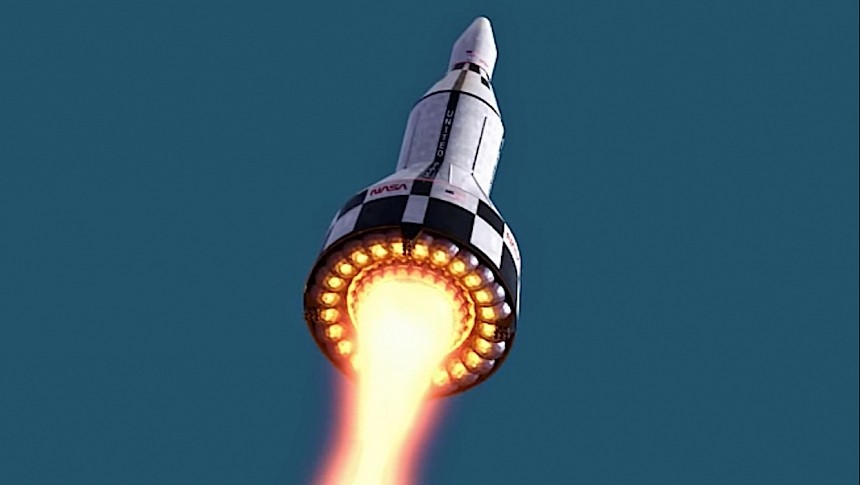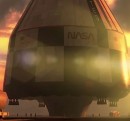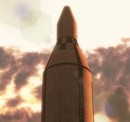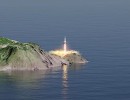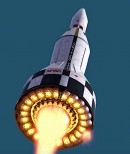If you look at it just the right way, the Saturn V is the most successful human-rated rocket ever made. After all, until next year's Artemis II mission kicks off, it will remain the only piece of technology ever made by our species that sent humans to another world.
The first flight of the Saturn V took place in 1967, and went on to serve a total of 12 Apollo missions and a Skylab one. It never fully failed, and retired in glory in 1973.
The origins of the Saturn V can be traced as far back as 1945, when an army of German rocket scientists led by Wernher von Braun arrived in the U.S. But while he and his crew were working on giving birth to America's space exploration program, others elsewhere were not only planning new ways of getting to space, but even replacements for the Saturn.
One of the ideas considered for that task is the Nexus. Created in the early 1960s, at a time when the Saturn was still on the drawing board, another German engineer named Krafft Arnold Ehricke, an advocate of space colonization, introduced something called the Nexus.
An employee of Bell, Convair, and General Dynamics, he proposed the Nexus as the world's first reusable single-stage to orbit (SSTO) rocket, packing a lot more punch than the Saturn V, in all respects.
We'll start with the thing's size. You see, Saturn V, the most powerful and largest rocket ever made by that time, was 363 feet (110 meters) tall, had a diameter of 33 feet (10 meters), and a mass of up to 6.5 million pounds (2.9 million kg).
A tiny one, compared to the Nexus. Ehricke's design would have stood 400 feet (122 meters) tall, would have spanned 150 feet (46 meters) in diameter, and would have tipped the scales at 48 million pounds (22 million kg).
Those are dimensions that are hard to comprehend, but more than required for the rocket to move 990,000 pounds (450,000 kg) of payload to other worlds. By comparison, Saturn V was only capable of lifting 116,000 pounds (53,000 kg).
Not only was the Nexus more capable than Saturn, but it would have been reusable too, making space exploration cheaper than it ended up being.
Operating a rocket of such a size and capability would have required insane logistics, and that's probably one of the reasons why this rocket never came to be in the real world. But now, thanks to modern tech, we have a CGI video of it in action, giving us a glimpse at how America would have looked like going into space.
The video was put together by specialist Hazegrayart and it shows everything from launch to separation and splashdown. To get a sense of how big this thing would have been, just look at it next to the tugs that come to recover it.
The origins of the Saturn V can be traced as far back as 1945, when an army of German rocket scientists led by Wernher von Braun arrived in the U.S. But while he and his crew were working on giving birth to America's space exploration program, others elsewhere were not only planning new ways of getting to space, but even replacements for the Saturn.
One of the ideas considered for that task is the Nexus. Created in the early 1960s, at a time when the Saturn was still on the drawing board, another German engineer named Krafft Arnold Ehricke, an advocate of space colonization, introduced something called the Nexus.
An employee of Bell, Convair, and General Dynamics, he proposed the Nexus as the world's first reusable single-stage to orbit (SSTO) rocket, packing a lot more punch than the Saturn V, in all respects.
We'll start with the thing's size. You see, Saturn V, the most powerful and largest rocket ever made by that time, was 363 feet (110 meters) tall, had a diameter of 33 feet (10 meters), and a mass of up to 6.5 million pounds (2.9 million kg).
A tiny one, compared to the Nexus. Ehricke's design would have stood 400 feet (122 meters) tall, would have spanned 150 feet (46 meters) in diameter, and would have tipped the scales at 48 million pounds (22 million kg).
Those are dimensions that are hard to comprehend, but more than required for the rocket to move 990,000 pounds (450,000 kg) of payload to other worlds. By comparison, Saturn V was only capable of lifting 116,000 pounds (53,000 kg).
Not only was the Nexus more capable than Saturn, but it would have been reusable too, making space exploration cheaper than it ended up being.
Operating a rocket of such a size and capability would have required insane logistics, and that's probably one of the reasons why this rocket never came to be in the real world. But now, thanks to modern tech, we have a CGI video of it in action, giving us a glimpse at how America would have looked like going into space.
The video was put together by specialist Hazegrayart and it shows everything from launch to separation and splashdown. To get a sense of how big this thing would have been, just look at it next to the tugs that come to recover it.
